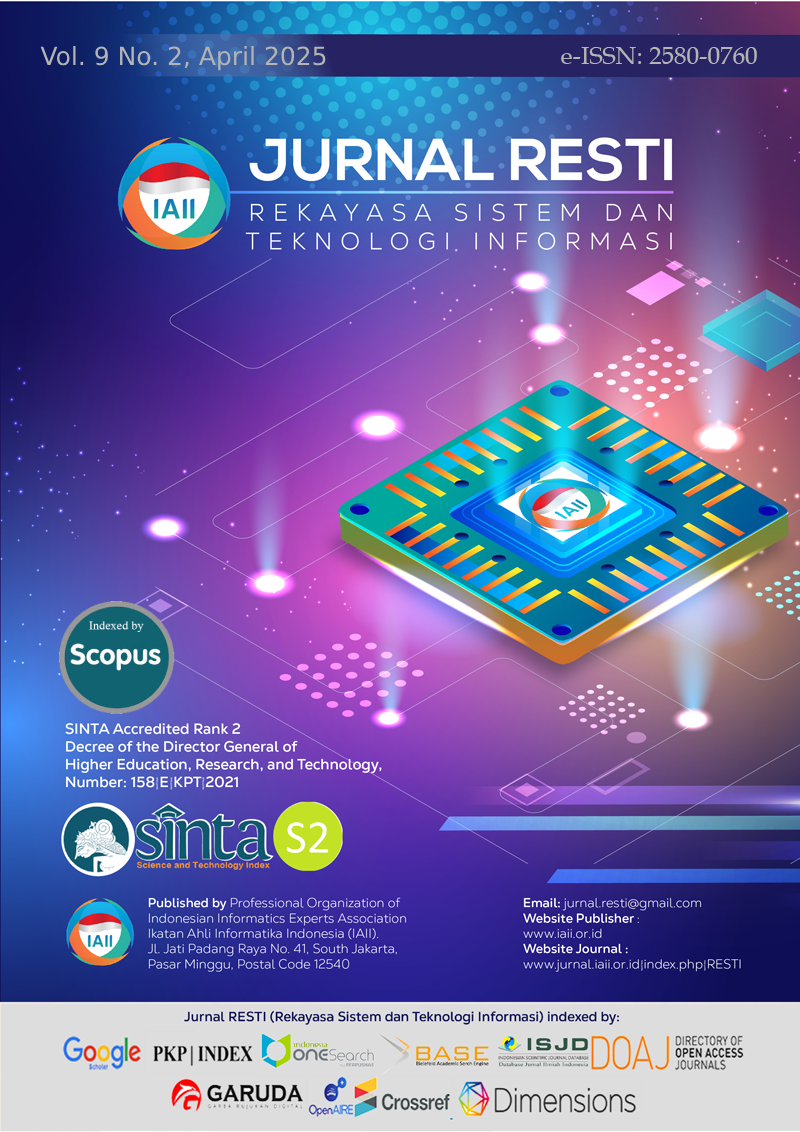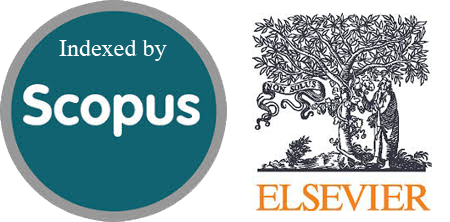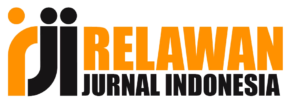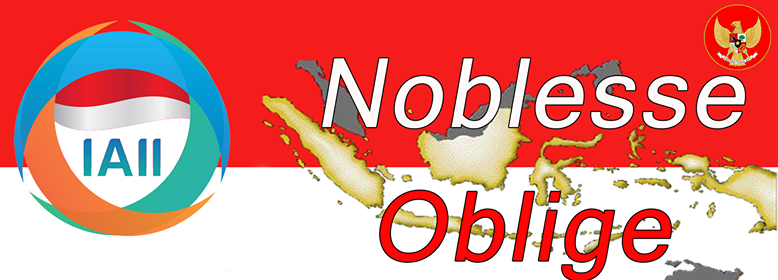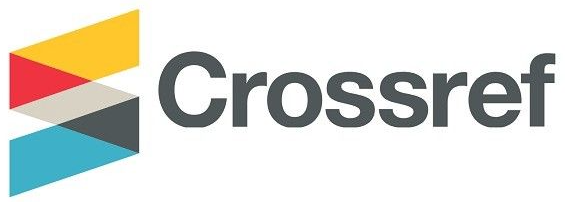Measuring Factors of Trust in the Use of E-Government: A Multi-Factor Analysis of the E-Government in Indonesia
Abstract
The implementation of dynamic records management applications within the Indonesian government remains relatively limited, with a lack of comprehensive integration between authorised institutions at both the central and regional levels. This research examines the impact of technical aspects, government agency variables, citizen variables, and risk indicators on trust in e-government. Furthermore, this study seeks to establish the effect of social factors and the advantages of trust in e-government. Finally, this research shows how trust in e-government influences satisfaction, willingness to use, and acceptance of e-government. The study examined 117 respondents using the integrated dynamic archival information system - SRIKANDI. Technical and risk factors were found to positively influence trust in e-government, with effects on satisfaction, intention to use, and adoption of e-government. Those who trusted SRIKANDI were more likely to utilize and implement the program. The findings indicate that for civil servants, trust in the government is also a factor influencing the utilisation of e-government services.
Downloads
References
L. Alzahrani, W. Al-Karaghouli, and V. Weerakkody, “Analysing the critical factors influencing trust in e-government adoption from citizens’ perspective: A systematic review and a conceptual framework,” Int. Bus. Rev., vol. 26, no. 1, pp. 164–175, 2017, doi: 10.1016/j.ibusrev.2016.06.004.
H. Zhang, X. Xu, and J. Xiao, “Diffusion of e-government: A literature review and directions for future directions,” Government Information Quarterly, vol. 31, no. 4. Elsevier Ltd, pp. 631–636, 2014. doi: 10.1016/j.giq.2013.10.013.
F. T. Hartanti, J. H. Abawajy, M. Chowdhury, W. Shalannanda, and F. T. Hartanti, “Citizens’ Trust Measurement in Smart Government Services,” IEEE Access, vol. 9, pp. 150663–150676, 2021, doi: 10.1109/ACCESS.2021.3124206.
H. Zahid, S. Ali, E. Abu-shanab, H. Muhammad, and U. Javed, “Telematics and Informatics Determinants of intention to use e-government services : An integrated marketing relation view,” Telemat. Informatics, vol. 68, no. October 2021, p. 101778, 2022, doi: 10.1016/j.tele.2022.101778.
A. Hooda, P. Gupta, A. Jeyaraj, M. Giannakis, and Y. K. Dwivedi, “The effects of trust on behavioral intention and use behavior within e-government contexts,” Int. J. Inf. Manage., vol. 67, no. July, 2022, doi: 10.1016/j.ijinfomgt.2022.102553.
A. Kanaan, A. Al-Hawamleh, A. Abulfaraj, H. M. Al-Kaseasbeh, and A. H. Alorfi, “The effect of quality, security and privacy factors on trust and intention to use e-government services,” Int. J. Data Netw. Sci., vol. 7, no. 1, pp. 185–198, 2023, doi: 10.5267/j.ijdns.2022.11.004.
S. Y. Hung, C. M. Chang, and T. J. Yu, “Determinants of user acceptance of the e-Government services: The case of online tax filing and payment system,” Gov. Inf. Q., vol. 23, no. 1, pp. 97–122, 2006, doi: 10.1016/j.giq.2005.11.005.
M. Hutahaean, I. J. Eunike, and A. D. K. Silalahi, “Do Social Media, Good Governance, and Public Trust Increase Citizens’ e-Government Participation? Dual Approach of PLS-SEM and fsQCA,” Hum. Behav. Emerg. Technol., vol. 2023, 2023, doi: 10.1155/2023/9988602.
S. Colesca, “INCREASING E-TRUST : A SOLUTION TO MINIMIZE RISK IN E-GOVERNMENT ADOPTION Quantitative Methods in Enterprises Behavior Analysis under Risk an Uncertainty,” J. Appl. Quant. Tech., vol. 4, no. 1, pp. 31–44, 2009.
L. Carter and F. Bélanger, “The utilization of e-government services: Citizen trust, innovation and acceptance factors,” Inf. Syst. J., vol. 15, no. 1, pp. 5–25, 2005, doi: 10.1111/j.1365-2575.2005.00183.x.
V. Venkatesh, M. G. Morris, G. B. Davis, and F. D. Davis, “USER ACCEPTANCE OF INFORMATION TECHNOLOGY: TOWARD A UNIFIED VIEW,” vol. 27, no. 3, pp. 425–478, 2003.
R. Fadrial, H. T. R. F. Simanjuntak, W. Wirman, and W. S. Wibowo, “Fostering Trust Through Bytes : Unravelling The Impact of E-Government on Public Trust in Indonesian Local Government,” Interdiscip. J. Information, Knowledge, Manag., vol. 19, no. 15, 2024.
H. Nanang, Y. Durachman, I. Subchi, A. F. Misman, and Z. Zulkifli, “Factors that Affect the E-Government Procurement Trust in Indonesia,” 2018 6th Int. Conf. Cyber IT Serv. Manag. CITSM 2018, no. Citsm, pp. 1–5, 2019, doi: 10.1109/CITSM.2018.8674299.
S. Assegaff, A. Andrianti, and L. Y. Astri, “Evaluation of the Factors Influencing the Trust of Millennial Citizens in E-Government,” J. Phys. Conf. Ser., vol. 1898, no. 1, 2021, doi: 10.1088/1742-6596/1898/1/012009.
U. Pribadi, M. Iqbal, and F. Restiane, “Factors Affecting Trust in E-Government,” J. Gov. Civ. Soc., vol. Vol.5, No., pp. 263–276, 2021.
A. Kanaan, A. AL-Hawamleh, A. Abulfaraj, H. M. Al-Kaseasbeh, and A. Alorfi, “The effect of quality, security and privacy factors on trust and intention to use e-government services,” Int. J. Data Netw. Sci., vol. 7, pp. 185–198, 2023, doi: 10.5267/j.ijdns.2022.11.004.
L. Xiong, H. Wang, and C. Wang, “Predicting mobile government service continuance: A two-stage structural equation modeling-artificial neural network approach,” Gov. Inf. Q., vol. 39, no. 1, 2022, doi: 10.1016/j.giq.2021.101654.
E. S. Kassim, M. S. Shazwan Bin Abdul Halim, S. Kamal, and M. K. Hayat Mohd Banuri, “Data Protection: Trust to Government and Willingness to Provide Information,” Proc. - 2022 Int. Conf. Comput. Drone Appl. IConDA 2022, pp. 148–152, 2022, doi: 10.1109/ICONDA56696.2022.10000336.
J. Ejdys, R. Ginevicius, Z. Rozsa, and K. Janoskova, “The role of perceived risk and security level in building trust in e-government solutions,” E a M Ekon. a Manag., vol. 22, no. 3, pp. 220–236, 2019, doi: 10.15240/tul/001/2019-3-014.
S. Nookhao and S. Kiattisin, “Achieving a successful e-government : Determinants of behavioral intention from Thai citizens ’ perspective,” Heliyon, vol. 9, no. 8, p. e18944, 2023, doi: 10.1016/j.heliyon.2023.e18944.
W. H. DeLone and E. R. McLean, “The DeLone and McLean Model of A Ten - Year Update,” pp. 8–30, 2003.
A. Kanaan, A. Al-hawamleh, A. Abulfaraj, and H. M. Al-kaseasbeh, “The effect of quality , security and privacy factors on trust and intention to use e-government ser- vices,” Int. J. Data Netw. Sci., vol. 7, pp. 185–198, 2023, doi: 10.5267/j.ijdns.2022.11.004.
S. Chatterjee, A. K. Kar, and M. P. Gupta, “Success of IoT in Smart Cities of India: An empirical analysis,” Gov. Inf. Q., vol. 35, no. 3, pp. 349–361, 2018, doi: 10.1016/j.giq.2018.05.002.
R. Halonen, H. Thomander, and E. Laukkanen, “DeLone & McLean IS Success Model in Evaluating Knowledge Transfer in a Virtual Learning Environment,” Int. J. Inf. Syst. Soc. Chang., vol. 1, no. 2, pp. 36–48, 2010, doi: 10.4018/jissc.2010040103.
Y. Salaün and K. Flores, “Information quality: Meeting the needs of the consumer,” Int. J. Inf. Manage., vol. 21, no. 1, pp. 21–37, 2001, doi: 10.1016/S0268-4012(00)00048-7.
R. Nulhusna, P. I. Sandhyaduhita, A. N. Hidayanto, and K. Phusavat, “The relation of e-government quality on public trust and its impact on public participation,” Transform. Gov. People, Process Policy, vol. 11, no. 3, pp. 393–418, 2017, doi: 10.1108/TG-01-2017-0004.
I. C. Chang, Y. C. Li, W. F. Hung, and H. G. Hwang, “An empirical study on the impact of quality antecedents on tax payers’ acceptance of Internet tax-filing systems,” Gov. Inf. Q., vol. 22, no. 3, pp. 389–410, 2005, doi: 10.1016/j.giq.2005.05.002.
J. V. Chen, R. J. M. Jubilado, E. P. S. Capistrano, and D. C. Yen, “Factors affecting online tax filing - An application of the IS Success Model and trust theory,” Comput. Human Behav., vol. 43, pp. 251–262, 2015, doi: 10.1016/j.chb.2014.11.017.
A. A. Alalwan, A. M. Baabdullah, N. P. Rana, K. Tamilmani, and Y. K. Dwivedi, “Examining adoption of mobile internet in Saudi Arabia: Extending TAM with perceived enjoyment, innovativeness and trust,” Technol. Soc., vol. 55, no. March, pp. 100–110, 2018, doi: 10.1016/j.techsoc.2018.06.007.
D. H. McKnight, L. L. Cummings, and N. L. Chervany, “Initial Trust Formation in New Organizational Relationships,” Acad. Manag. Rev., vol. 23, no. 3, p. 473, 1998, doi: 10.2307/259290.
A. Beldad, T. van der Geest, M. De Jong, and M. Steehouder, “A cue or two and I’ll trust you: Determinants of trust in government organizations in terms of their processing and usage of citizens’ personal information disclosed online,” Gov. Inf. Q., vol. 29, no. 1, pp. 41–49, 2012, doi: 10.1016/j.giq.2011.05.003.
N. Olivero and P. Lunt, “Privacy versus willingness to disclose in e-commerce exchanges: The effect of risk awareness on the relative role of trust and control,” J. Econ. Psychol., vol. 25, no. 2, pp. 243–262, 2004, doi: 10.1016/S0167-4870(02)00172-1.
A. F. Salam, L. Lyer, P. Palvia, and R. Singh, “Trust in e-commerce,” Commun. ACM, vol. 48, no. 2, pp. 72–77, 2005, doi: 10.1145/1042091.1042093.
D. L. Hoffman, T. P. Novak, and M. Peralta, “Building Consumer Trust Online,” Commun. ACM, vol. 42, no. 4, pp. 80–85, 1999, doi: 10.1145/299157.299175.
S. L. Jarvenpaa, N. Tractinsky, L. Saarinen, and M. Vitale, “Consumer trust in an internet store: A cross-cultural validation,” J. Comput. Commun., vol. 5, no. 2, 1999, doi: 10.1111/j.1083-6101.1999.tb00337.x.
D. Grewal, J. Gotlieb, and H. Marmorstein, “The Moderating Effects of Message Framing and Source Credibility on the Price-Perceived Risk Relationship,” J. Consum. Res., vol. 21, no. 1, p. 145, 1994, doi: 10.1086/209388.
M. S. Featherman and P. A. Pavlou, “Predicting e-services adoption : a perceived risk facets perspective,” vol. 59, pp. 451–474, 2003, doi: 10.1016/S1071-5819(03)00111-3.
K. Rouibah, “Impact of Risk Perceptions and User Trust on Intention to Re-Use E-Government : A Mixed Method Research,” J. Glob. Inf. Manag., vol. 30, no. 1, pp. 1–29, 2022, doi: 10.4018/JGIM.307117.
H. A.- Omari and A. A.- Omari, “Building an e-Government e-Trust Infrastructure,” Am. J. Appl. Sci., vol. 3, no. 11, pp. 2122–2130, 2006, doi: 10.3844/ajassp.2006.2122.2130.
I. Najafi, “Identify Effective Factors for Improving E-Trust of E-Transactions in the Context of E-Commerce and E-Government,” Int. J. Comput. Trends Technol., vol. 17, no. 6, pp. 281–299, 2014, doi: 10.14445/22312803/ijctt-v17p152.
L. Carter, L. C. Shaupp, W. Virginia, N. Carolina, and R. Campbell, “The role of security and trust in the adoption of online tax filing,” vol. 5, no. 4, pp. 303–318, 2011, doi: 10.1108/17506161111173568.
V. Venkatesh, M. G. Morris, G. B. Davis, and F. D. Davis, “User Acceptance Of Information Technology: Toward A Unified View,” vol. 27, no. 3, pp. 425–478, 2003.
M. K. Alomari, “M-government trust framework: deployment of an empirical study amongst Jordanian youth,” Transform. Gov. People, Process Policy, vol. 16, no. 1, pp. 32–50, 2022, doi: 10.1108/TG-04-2020-0062.
P. Ratnasingam, “The role of facilitating conditions in developing trust for successful electronic marketplace participation,” J. Internet Commer., vol. 3, no. 3, pp. 95–110, 2004, doi: 10.1300/J179v03n03_06.
Y. Y. Yuen, P. H. P. Yeow, and N. Lim, “Internet banking acceptance in the united states and Malaysia: A cross-cultural examination,” Mark. Intell. Plan., vol. 33, no. 3, pp. 292–308, 2015, doi: 10.1108/MIP-08-2013-0126.
P. Ratnasingam, “The Role of Facilitating Conditions in Developing Trust for Successful Electronic Marketplace Participation The Role of Facilitating Conditions in Developing Trust for Successful Electronic Marketplace Participation,” vol. 2861, 2008, doi: 10.1300/J179v03n03.
R. J. Lewicki and C. Wiethoff, “Trust, trust development, and trust repair.,” Handb. Confl. Resolut. Theory Pract. (2nd Ed)., no. January 2000, pp. 92–119, 2000.
D. H. McKnight, V. Choudhury, and C. Kacmar, “The Impact of Initial Consumer Trust on Intentions to Transact with a Web Site: A Trust Building Model.” 2002.
V. Weerakkody, R. El-Haddadeh, F. Al-Sobhi, M. A. Shareef, and Y. K. Dwivedi, “Examining the influence of intermediaries in facilitating e-government adoption: An empirical investigation,” Int. J. Inf. Manage., vol. 33, no. 5, pp. 716–725, 2013, doi: 10.1016/j.ijinfomgt.2013.05.001.
L. Alzahrani, W. Al-Karaghouli, and V. Weerakkody, “Investigating the impact of citizens’ trust toward the successful adoption of e-government: A multigroup analysis of gender, age, and internet experience,” Inf. Syst. Manag., vol. 35, no. 2, pp. 124–146, 2018, doi: 10.1080/10580530.2018.1440730.
P. Pavlou, “Association for Information Systems AIS Electronic Library (AISeL) Integrating Trust in Electronic Commerce with the Technology Acceptance Model: Model Development and Validation Recommended Citation Pavlou, Paul, "Integrating Trust in Electronic Commerce,” pp. 12–31, 2001.
N. Kock, “Minimum Sample Size Estimation in PLS-SEM : An Application in Tourism and Hospitality Research,” pp. 1–16, 2019, doi: 10.1108/978-1-78756-699-620181001.
L. Wenjuan and L. Xue, “Analyzing the Critical Factors Influencing Post-Use Trust and Its Impact on sustainability Analyzing the Critical Factors Influencing Post-Use Trust and Its Impact on Citizens ’ Continuous-Use Intention of E-Government : Evidence from Chinese Municipaliti,” no. July, 2021, doi: 10.3390/su13147698.
M. Kurfal, A. Arifo, G. Tokdemir, and Y. Paçin, “Computers in Human Behavior Adoption of e-government services in Turkey,” vol. 66, pp. 168–178, 2017.
K. A. Al Mansoori, J. Sarabdeen, and A. L. Tchantchane, “Investigating Emirati citizens ’ adoption of e-government services in Abu Dhabi using modified UTAUT model,” vol. 31, no. 2, pp. 455–481, 2021, doi: 10.1108/ITP-12-2016-0290.
P. Mikalef, K. Sharma, S. Chatterjee, R. Chaudhuri, V. Parida, and S. Gupta, “All eyes on me: Predicting consumer intentions on social commerce platforms using eye-tracking data and ensemble learning,” Decis. Support Syst., vol. 175, p. 114039, 2023, doi: https://doi.org/10.1016/j.dss.2023.114039.
M. A. Shareef et al., “Citizens ’ Adoption Behavior of Mobile Government ( mGov ): A Cross-Cultural Study Citizens ’ Adoption Behavior of Mobile Government ( mGov ): A Cross-Cultural,” Inf. Syst. Manag., vol. 33, no. 3, pp. 268–283, 2016, doi: 10.1080/10580530.2016.1188573.
M. Decman and E. Kozel, “Examining the Impacts of Technology and Trust on I-Voting Acceptance in the COVID-19 Aftermath,” Int. J. Electron. Gov. Res., vol. 19, no. 1, pp. 1–23, 2023, doi: 10.4018/IJEGR.327454.
S. Yamin and H. Kurniawan, “Generasi baru mengolah data penelitian dengan partial least square path modeling,” Jakarta: Salemba Infotek, 2011.
W. W. Chin, “How to write up and report PLS analyses,” in Handbook of partial least squares: Concepts, methods and applications, Springer, 2009, pp. 655–690.
R. A. Dwianto, A. B. Darmawan, J. Santoso, and U. Pribadi, “Factors Influencing Intention To Use E-Government Services Among Students in Universitas Sebelas Maret, Indonesia,” Dialogue J. Ilmu Adm. Publik, vol. 5, no. 1, pp. 415–436, 2023, doi: 10.14710/dialogue.v5i1.17339.
A. Wahyudi, M. T. Putra, D. Indra Sensuse, S. Lusa, A. Prasetyo, and Assaf Arief, “Measuring the effect of Users’ Privacy Concerns on the Use of Jakarta Smart City Mobile Application (JAKI),” J. RESTI (Rekayasa Sist. dan Teknol. Informasi), vol. 6, no. 6, pp. 1014–1020, 2022, doi: 10.29207/resti.v6i6.4544.
W. Li, “Analyzing the Critical Factors Influencing Post-Use Trust and Its Impact on Citizens ’ Continuous-Use Intention of E-Government : Evidence from Chinese Municipalities,” 2021.
A. Habib, D. Alsmadi, and V. R. Prybutok, “Factors that determine residents’ acceptance of smart city technologies,” Behav. Inf. Technol., vol. 39, no. 6, pp. 610–623, 2020, doi: 10.1080/0144929X.2019.1693629.
M. Nofer, O. Hinz, J. Muntermann, and H. Roßnagel, “The economic impact of privacy violations and security breaches: A laboratory experiment,” Bus. Inf. Syst. Eng., vol. 6, no. 6, pp. 339–348, 2014, doi: 10.1007/s12599-014-0351-3.
G. Bansal and F. M. ZAHEDI, “TRUST-DISCOUNT TRADEOFF IN THREE CONTEXTS: FRUGALITY MODERATING PRIVACY AND SECURITY CONCERNS,” J. Allergy Clin. Immunol., vol. 130, no. 2, p. 556, 2010.
M. M. Ayyash, K. Ahmad, and D. Singh, “Investigating the Effect of Information Systems Factors on Trust in E-Government Initiative Adoption in Palestinian Public Sector,” vol. 5, no. 15, pp. 3865–3875, 2013, doi: 10.19026/rjaset.5.4447.
Copyright (c) 2025 Jurnal RESTI (Rekayasa Sistem dan Teknologi Informasi)

This work is licensed under a Creative Commons Attribution 4.0 International License.
Copyright in each article belongs to the author
- The author acknowledges that the RESTI Journal (System Engineering and Information Technology) is the first publisher to publish with a license Creative Commons Attribution 4.0 International License.
- Authors can enter writing separately, arrange the non-exclusive distribution of manuscripts that have been published in this journal into other versions (eg sent to the author's institutional repository, publication in a book, etc.), by acknowledging that the manuscript has been published for the first time in the RESTI (Rekayasa Sistem dan Teknologi Informasi) journal ;

